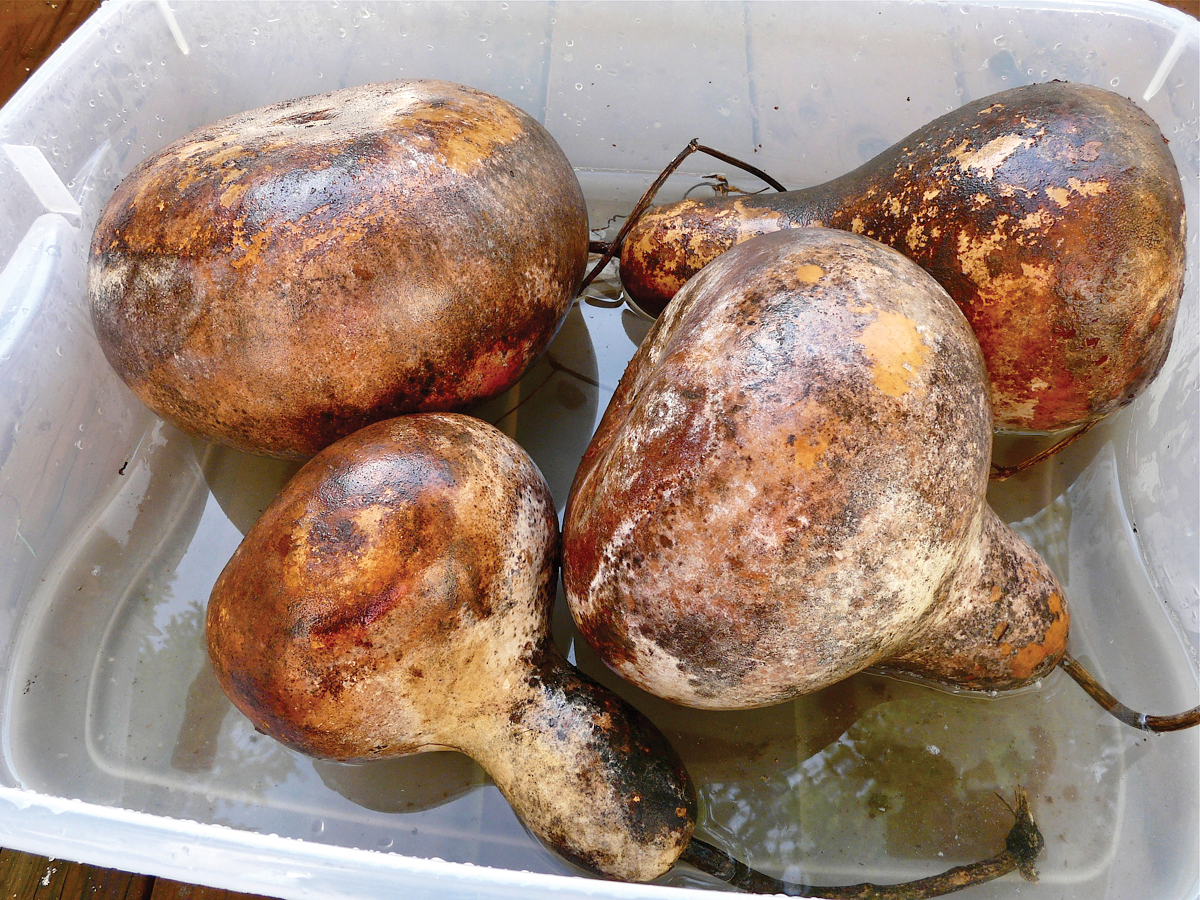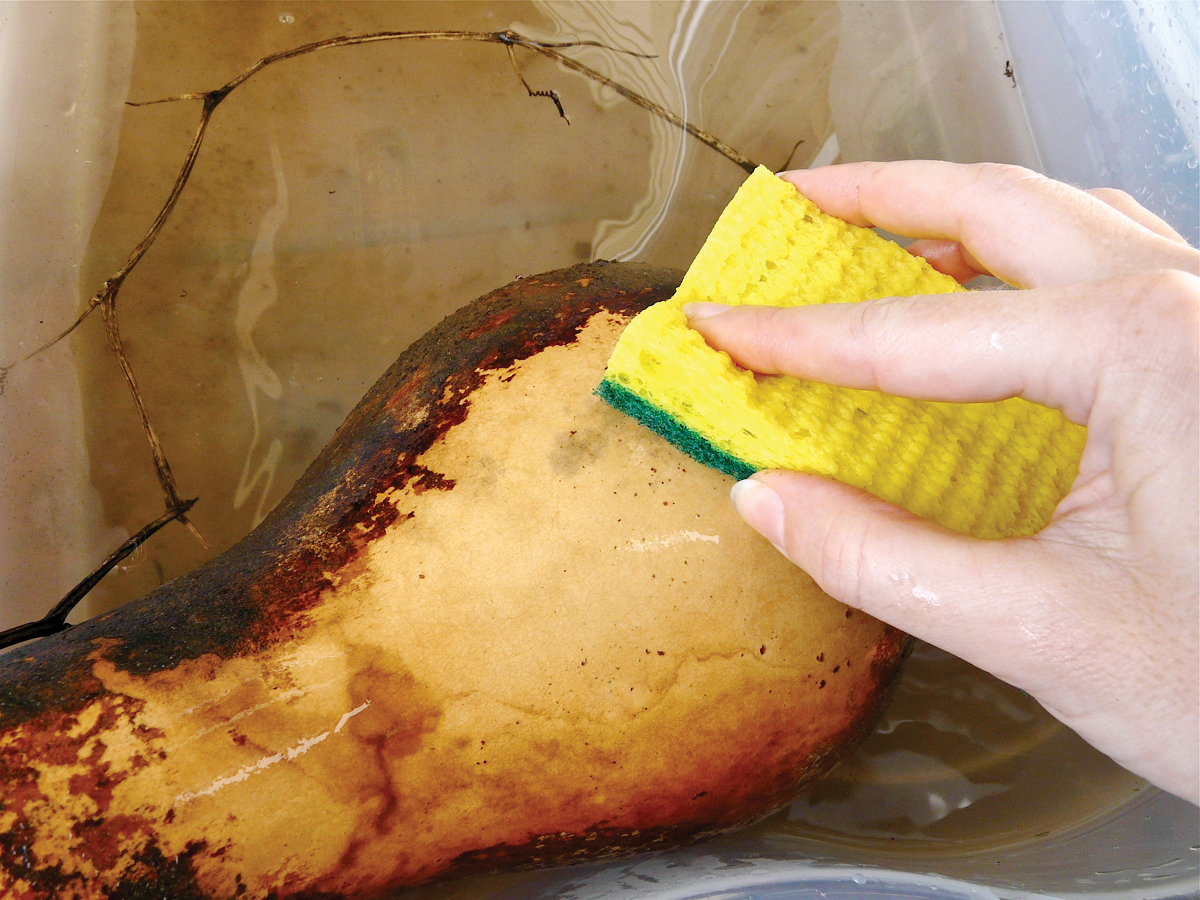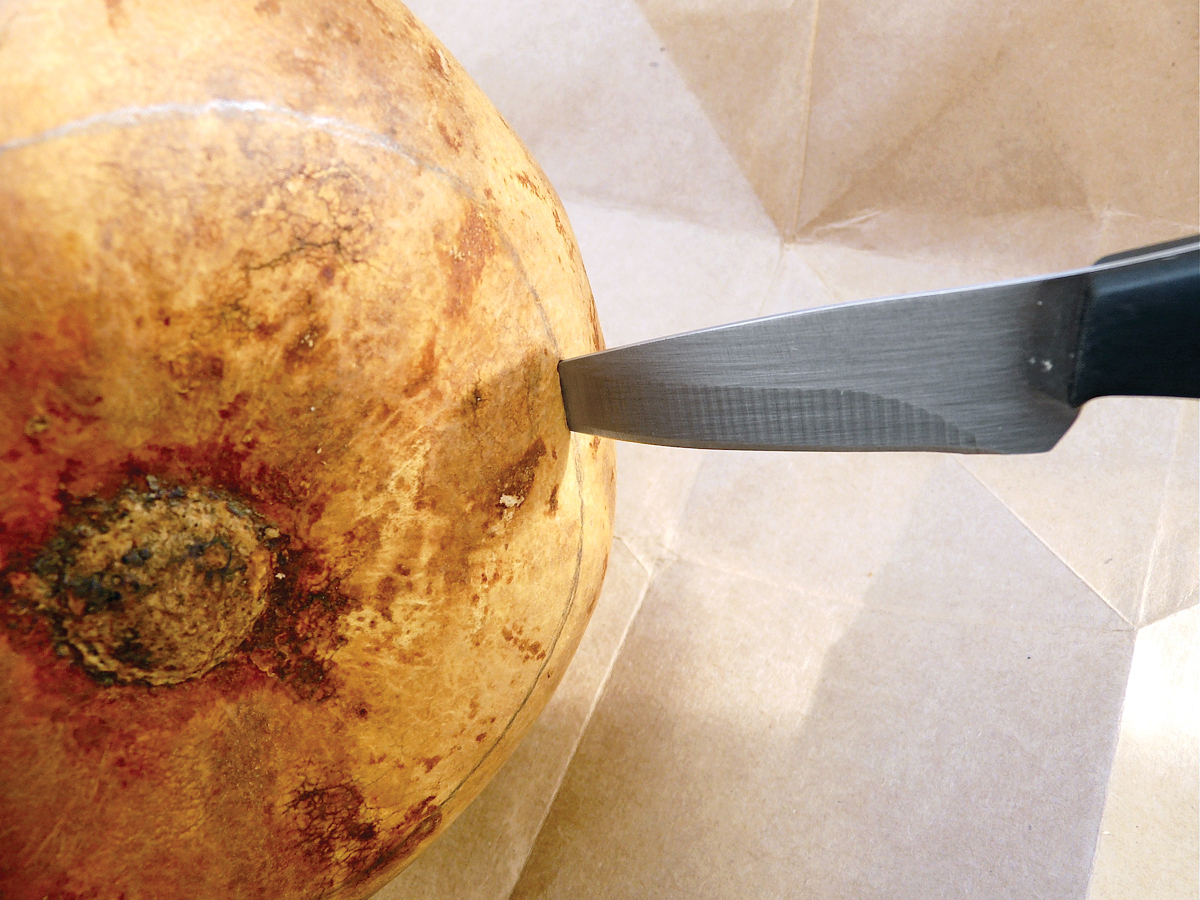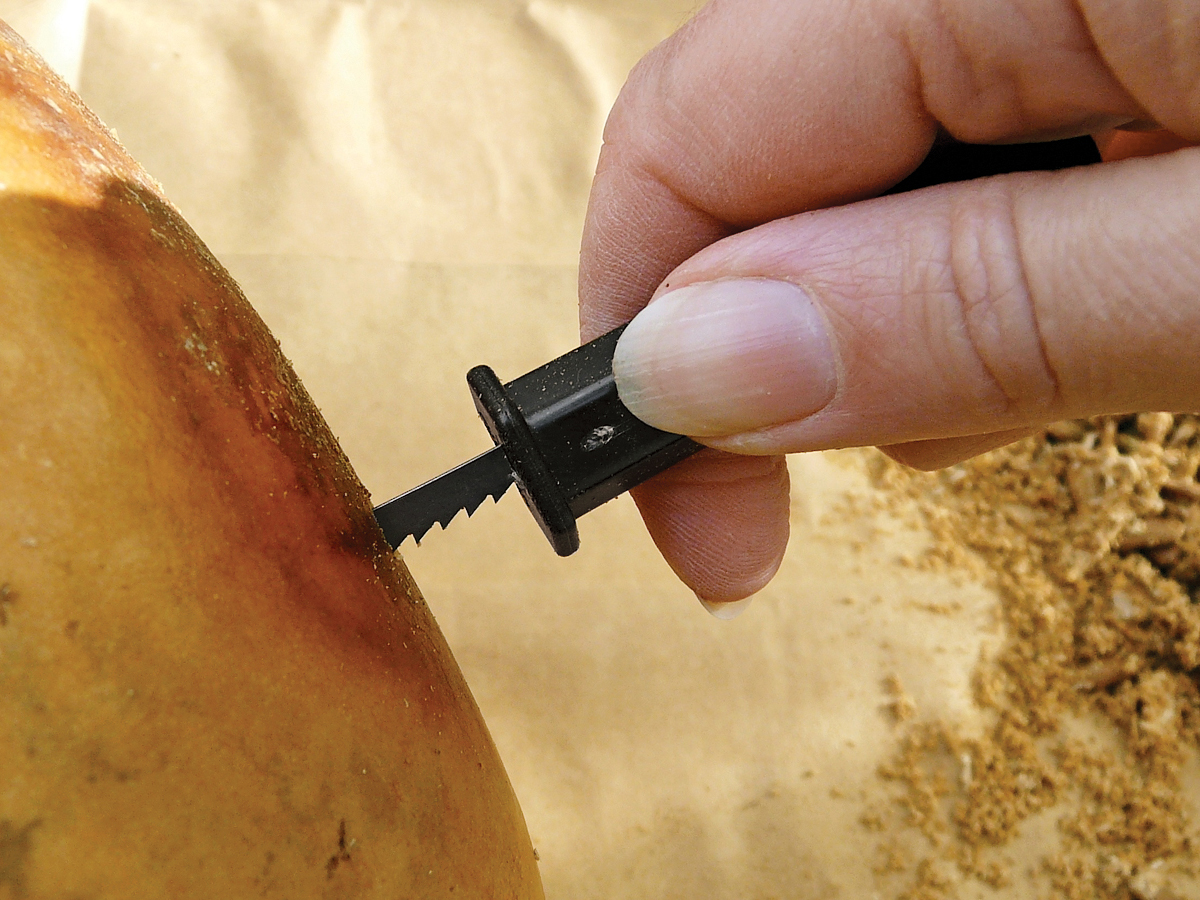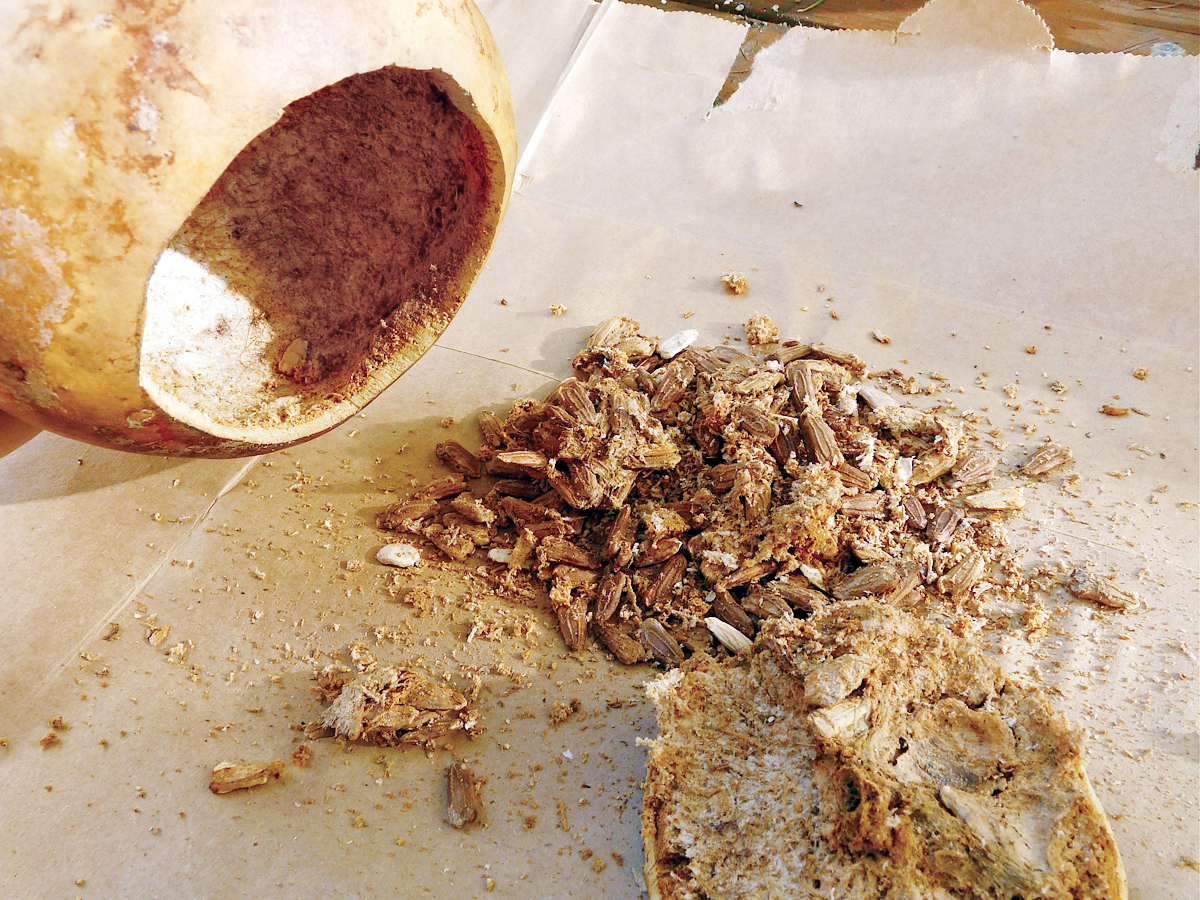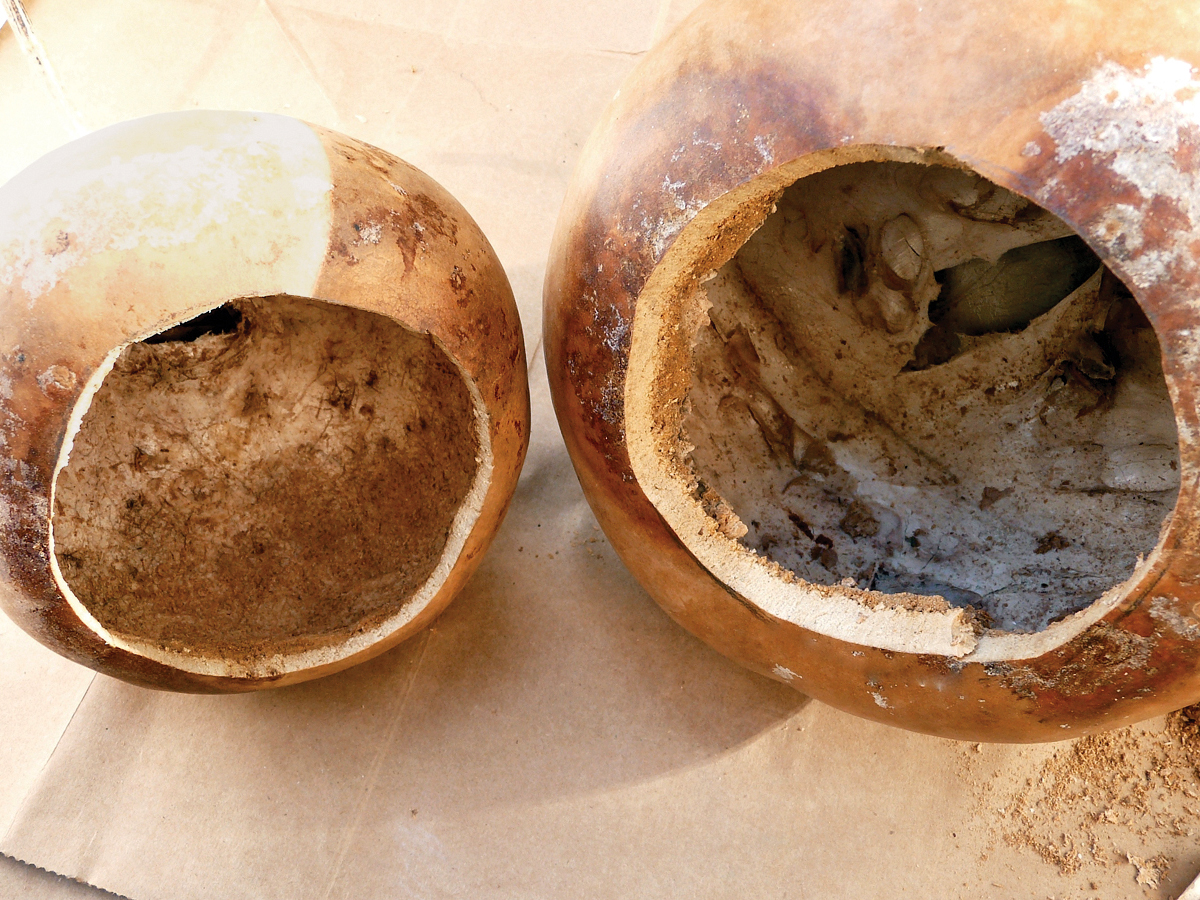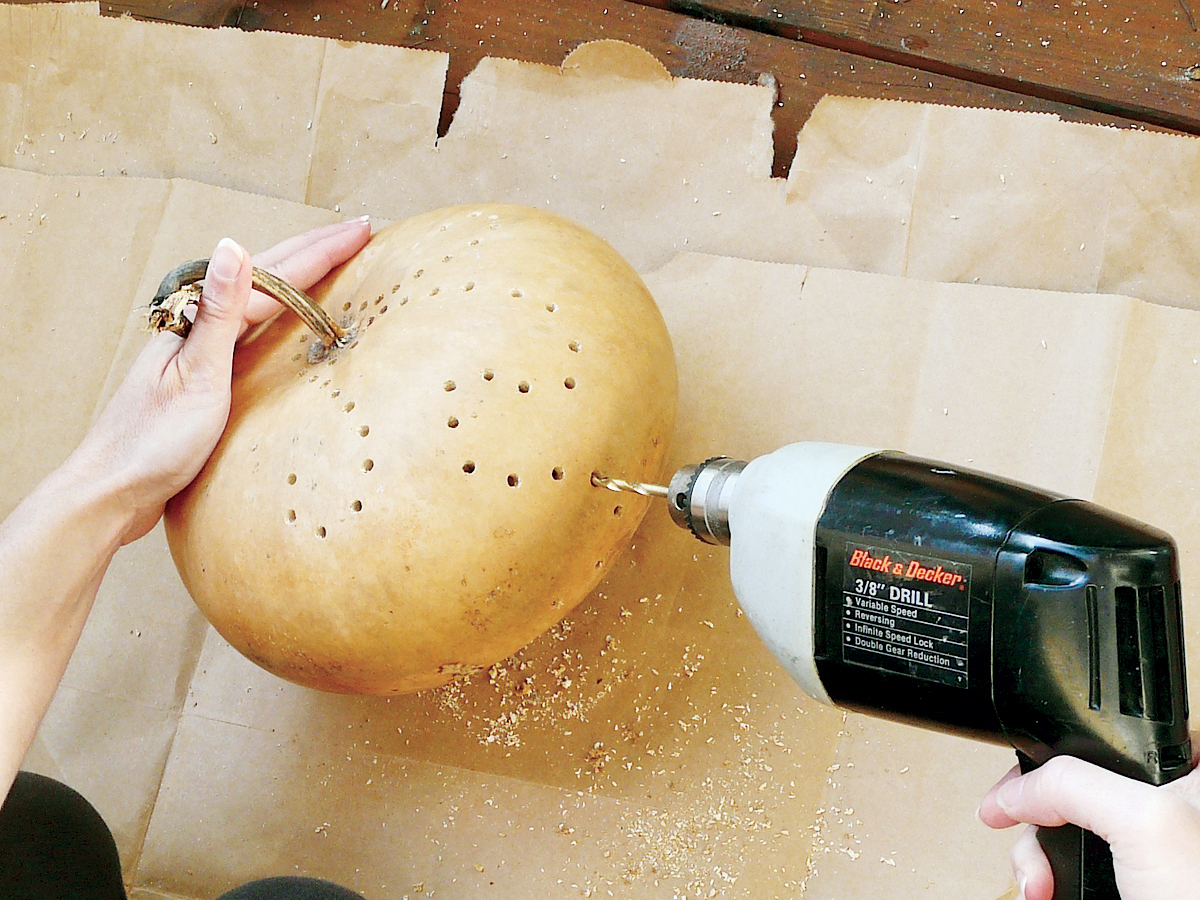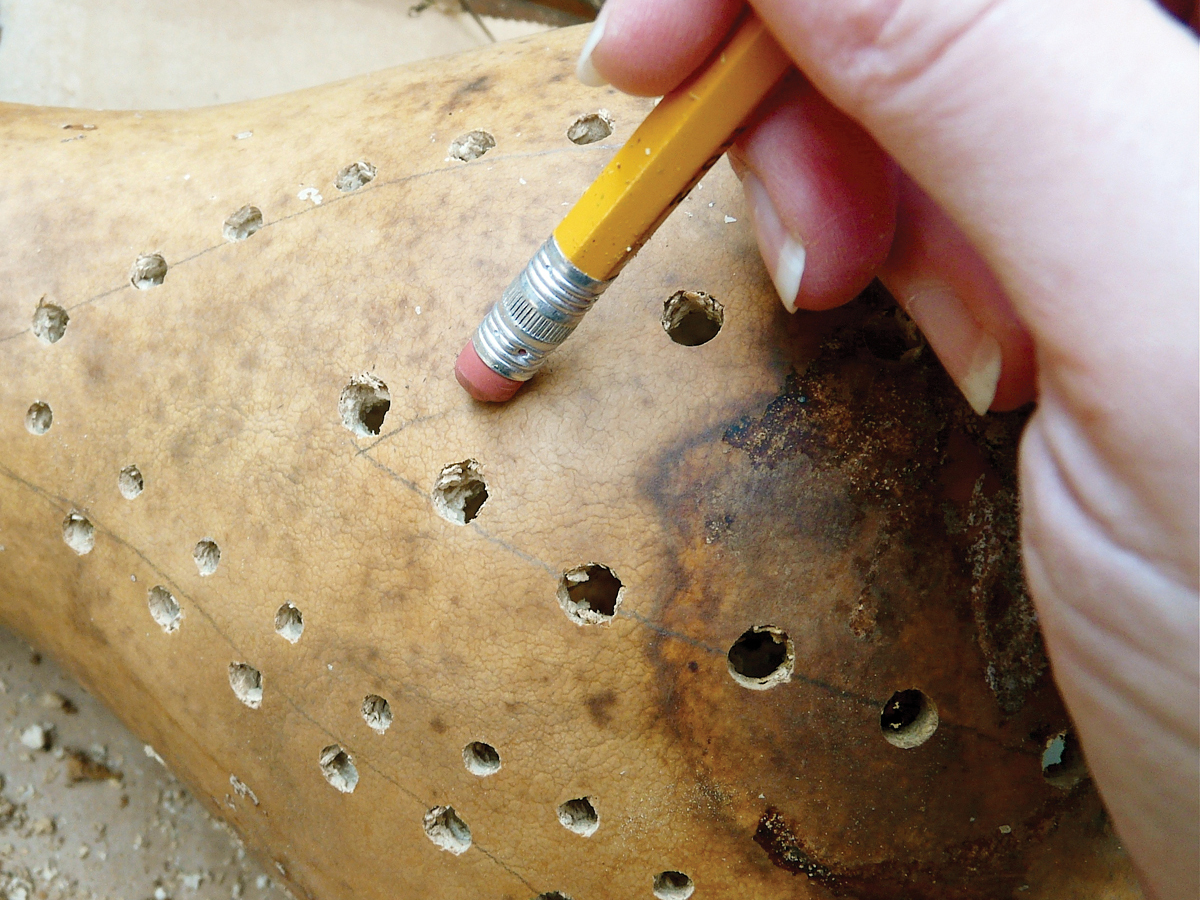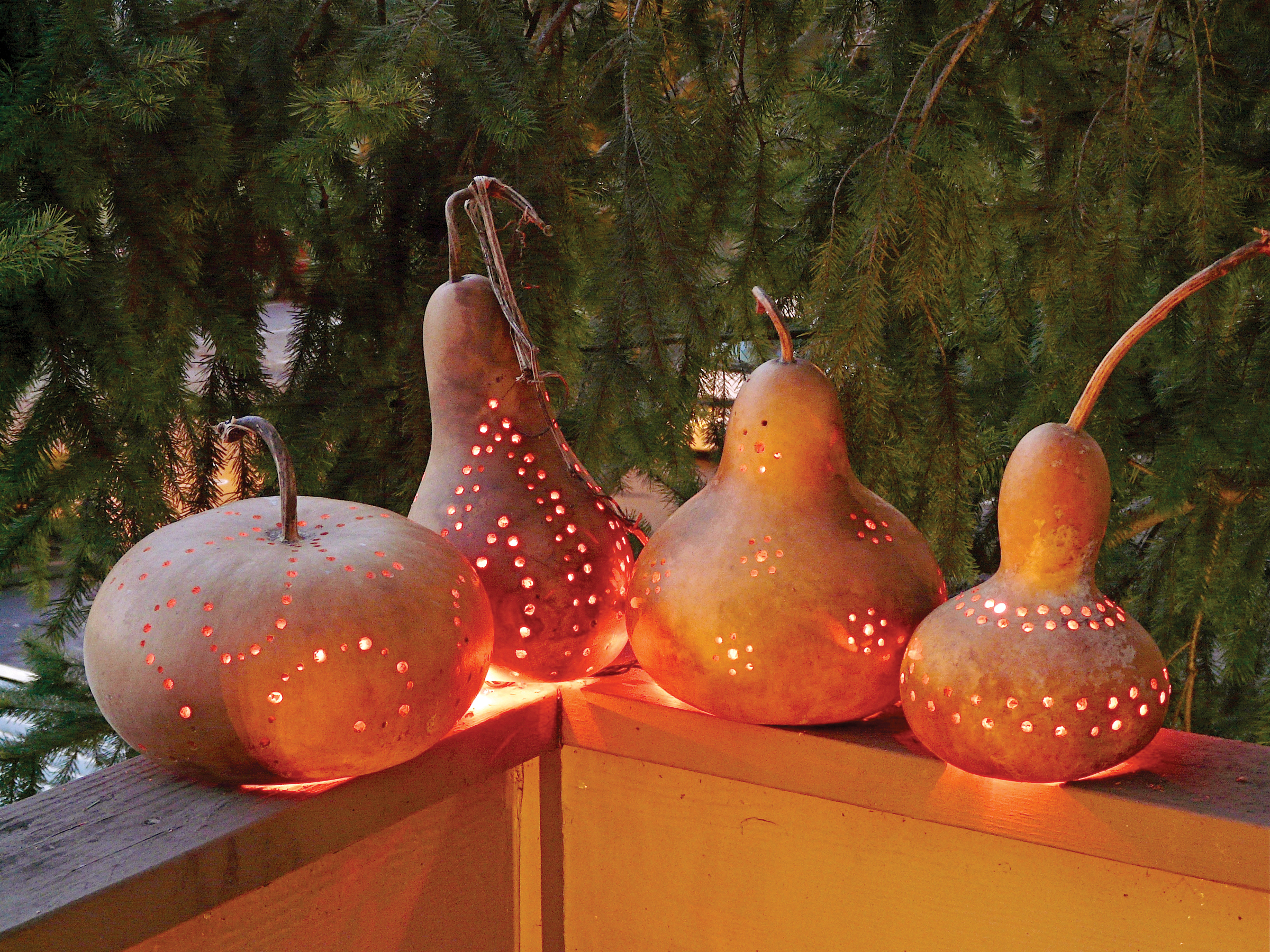Hard-shell gourds, sometimes called calabash gourds, are some of the world’s first cultivated plants. They are harvested from their vines in the fall and then air-dried for several months. When a gourd is fully dry inside and out, it forms a woody shell that can be cut with simple tools.
Cultures all over the world fashion hard-shell gourds into vessels or musical instruments. Here, we’ve turned them into festive outdoor lanterns, using a drill to create patterns for light to shine through.
NOTE: This project is fairly messy, making it a good outdoor build.




